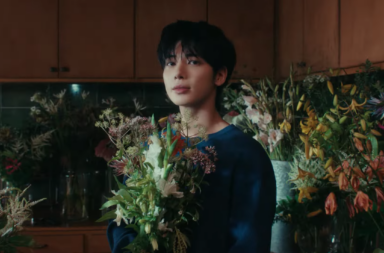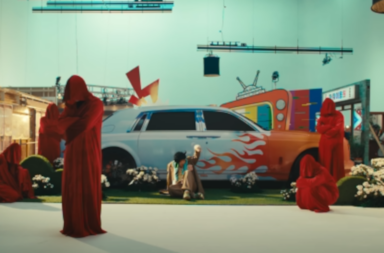BTS has returned sooner than we expected with Love Yourself: Answer and its title song “Idol”! As the finale to the Love Yourself series — beginning with LY: Her’s “DNA” and LY: Tear’s “Fake Love” — expectations were high, and for the most part, the MV met them. “Idol” is a step in another direction from the dark and dramatic “Fake Love”, and the absence of a silent minute-long break in the video is definitely a welcome development. The MV combines traditional sounds and images with bright colours and surprising special effects, leading it to be less cohesive than previous releases, both visually and aurally.
While the “Idol” MV is, for the most part, entertaining to watch and brings the message of the lyrics to life, it can be quite jarring. Yet this is likely to be the point: through the MV, BTS responds to criticism from all sides by showing their attachment to their cultural roots (both traditional and modern), but still determinedly setting foot in a more global setting, too. The fusion of traditional with innovative allows the group to present an unapologetically mixed identity, and to show their pride in it.
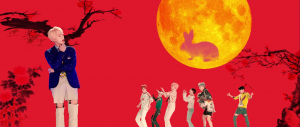
The idea of an “idol” in Korean pop culture, specifically in K-pop, is a celebrity who has trained rigorously to become a public entertainer. While members of some K-pop groups do participate in the production of their own music, it is not the norm: instead, groups tend to have their music and concepts planned and provided for them by their agencies. And so K-pop idols, and K-pop in general, have accumulated criticisms of being manufactured, rather than being unique and creative. In “Idol”, BTS pushes past these, by demonstrating they know their own worth and are happy with themselves, whatever people judge their identity to be.
There is a clear nod to Korean traditional culture in the MV, most noticeably through the Hanbok (traditional clothing) that the members wear, and the Korean-style architecture. In addition, there are more subtle references to folklore, for example through the rabbit in the moon, and the tiger. The legend of the moon rabbit is a story of determination and perseverance, and bold decisions and actions leading to success. The tiger is popular in Korean folklore, as a respected symbol of knowledge, courage and power, and as a guardian spirit. The presence of these Korean cultural symbols showcases BTS’s identity first and foremost as Korean. The MV brushes off criticisms of their music becoming more “Western” or “mainstream” by suggesting the group isn’t losing their original identity, and instead celebrates it.

To contrast these traditional aspects of the MV, the bright and positive colours seem to represent BTS’s roots in the K-pop industry as well. Despite globalisation on an unprecedented scale in the K-pop industry, the excessively saturated colours feel like an alliance with this modern part of Korean culture. Rather than straying from the stereotypical visual signifiers of K-pop music videos, “Idol” takes them to an extreme, also seemingly in retaliation against criticisms of Westernisation. The modern and Western fashion choices too, such as J-hope’s bright yellow Bugs Bunny sweater, and Suga’s Snow White one, defy expectations of masculinity and add a playful contrast to the traditional clothing, suggesting they feel happy and comfortable with both.
Some of the visual effects are thought-provoking, such as the distorted and larger-than-life figures of the members looking down at their real selves dancing, enclosed in a glass box: again, another reference to expectations of K-pop MVs. It’s an uncomfortable sight, and an off-putting scene in what presents itself to be an entertaining MV. Nevertheless, it self-consciously symbolises the difference between what people see them as when they scrutinise their every move through a screen, and who they actually are — and most importantly, that they don’t care and will continue to do their own thing.
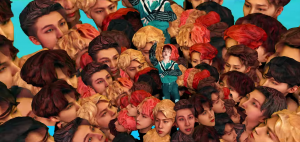
On the other hand, some of the other special effects don’t seem to add anything, such as the shot in which the members’ faces cover the screen. These often feel abrupt — as does the shark — and more like effects and images for the sake of it, as BigHit Entertainment has the funds and resources, and so can afford to throw them in. Of course, if you try hard, meaning can be attached to anything, but the MV is too saturated with supposedly artistic visual effects, and it makes for a dizzying watch at times. With visual effects, less would have been more.
On the whole, the MV is generally quite energetic and fun, and includes an impressive range of symbols and meanings with a direct link to the lyrics of the song, but also one too many other things to look at, making the shots too crowded. Like with the “Not Today” MV, even the number of extras and back-up dancers feels unnecessary.
 Unlike the MV, the song doesn’t sound particularly adventurous when compared with the group’s previous title songs. In fact, it seems like it could have more to it during the verses, as only the rap, the whistles and the beat really stand out. In comparison, the melody of the chorus is catchy but loud, making the rhythm throughout feel slightly choppy.
Unlike the MV, the song doesn’t sound particularly adventurous when compared with the group’s previous title songs. In fact, it seems like it could have more to it during the verses, as only the rap, the whistles and the beat really stand out. In comparison, the melody of the chorus is catchy but loud, making the rhythm throughout feel slightly choppy.
Nevertheless, the song also does an interesting job of mixing traditional with modern. While the traditional instruments aren’t as distinguishable as the MV teaser had suggested, they are still there. Having sound effects in the lyrics too adds a unique touch, such as vocalising the sound of a drum and the traditional interjectory exclamations. Meanwhile, on the modern side of things, again there is an unnecessary addition of autotuning the vocal parts, which the song would have been better without.
You can call me artist
You can call me idol
No matter what you call me
I don’t care
I’m proud of it
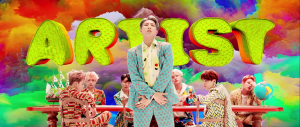
The lyrics certainly fit with the MV. Not many K-pop groups tend to be so involved with the writing and production of their music, and with the long rivalry between the concept of “underground” rappers who make their own music, and idol rappers who are given lyrics to perform, there can be a sense of superiority about the non-idol rappers, and idol rappers are sometimes looked down on. K-pop idols who actively create music are often caught in the crossfire in debates about what makes someone a real artist, as they don’t seem to entirely fit in one category or another, leaving them caught somewhere in the middle. BTS is saying the categories don’t really matter: they’re doing what makes them happy, and they’re at peace with their own identity.
It’s fair to say then that the MV achieves its goal in portraying different aspects of BTS’s multifaceted identity, and creating a lively visual companion to the song. A lot of thought and effort has certainly gone into making it, but whether there are too many effects mixed in to detract from the flow and make it less enjoyable to watch is a different matter.
Readers, how did you find the MV?
[YouTube. Images via BigHit Entertainment. Lyrics via ColorCoded Lyrics, Owlcation.]
